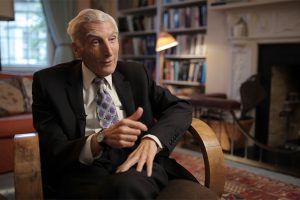Higgs Boson
Physicist Daniela Bortoletto on the discovery of the Higgs Boson, the Large Electron-Positron collider, and th...
How can one access the contents a person’s mind? How can the production of a neurotransmitter in a brain be mapped? What are the current challenges that medical imaging faces? These and other questions are answered by Professor of Neurology, Neurosurgery and Biomedical Engineering at McGill University Sylvain Baillet.
Medical imaging is definitely one beautiful example where there is a fundamental or very strong translational aspect from basic science to things that are truly useful in everyday people’s lives, especially for clinical and therapeutic aspects. If you look at all the available techniques today for brain imaging in particular, again, they are all based on these fundamental principles of physics related to nuclear or atomic energy physics, but also X-rays, electromagnetics – these kinds of aspects.
The clinical imaging techniques that have developed over the past few decades have really revolutionized the assessment of brain conditions that is being done in hospitals. Over the past few centuries it was not possible to assess what was affecting somebody’s mind, somebody’s brain and behavior without proceeding to biopsies or opening the skulls to see what was in there. That is really a revolution that is taking place and it is in well march in most hospitals.
A variety of things can be seen with MRI, but in clinical settings the procedures need to be efficient, as quick as possible and also reproducible with a great variety of patients. And also the test has to be as short as possible.

Physicist Daniela Bortoletto on the discovery of the Higgs Boson, the Large Electron-Positron collider, and th...

Physicist Martin Rees on Isaac Newton, theory of general relativity, and black holes

Culture of Medicine professor, David S. Jones, on the age of genomics, alternative ways to help society, and t...